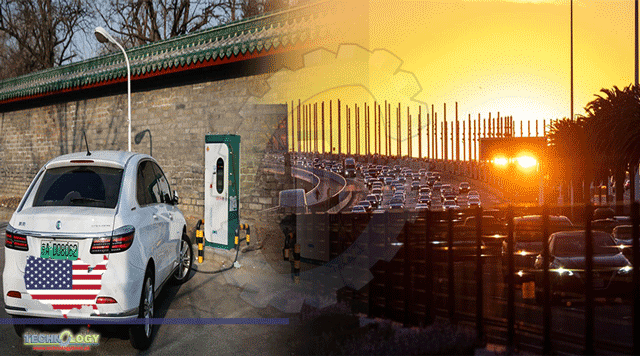California, Car Culture Is Legendary And Asthma Rates Are Abysmal — Has Long Led The Nation When It Comes To Supporting Electric Vehicles.

- Apple car would be welcomed by German parts make
- China’s military bans Teslas, citing security concerns
- U.S. chip and auto execs are asking lawmakers for help
California Is EV Country
Good morning, and welcome to the first edition of the Hyperdrive newsletter, our look at the revolution that’s reshaping the global auto industry. Each day of the week, we’ll report from a different part of the world to bring you our insights on everything from EVs to batteries, self-driving cars to flying taxis. I’ve been covering the transition to electric vehicles for a decade from San Francisco, and it finally feels like it’s really happening.
California — Where Freeways Are Ubiquitous, Car Culture Is Legendary And Asthma Rates Are Abysmal — Has Long Led The Nation When It Comes To Supporting Electric Vehicles. The state still offers clean vehicle rebates on cars and there’s a ZEV — or Zero Emission Vehicle — mandate for manufacturers. The climate crisis and our horrific wildfire season is accelerating the urgency of the transition: in September, Governor Gavin Newsom announced that the state is banning the sale of new gas-powered cars starting in 2035.
Silicon Valley has also led the way on many of the advances in robotics and computing. After the DARPA Urban challenge in 2007, autonomous vehicle development began in earnest with Google’s self driving car project, which spun into Waymo. While it once stood alone, today dozens of companies have state permits to conduct testing with drivers, and six companies have advanced to driverless testing permits. Uber and Lyft are both headquartered in San Francisco, where the question over whether their drivers are employees or contractors has been hardest-fought here.
The region is abuzz with rumors about what exactly Apple is, or isn’t, doing when it comes to making its own autonomous car. Electric vehicle companies based in China, like Nio and XPeng, have Silicon Valley outposts. Promising startups like Aurora and Rivian have raised millions of dollars—Amazon is funding both—while Canoo, Lucid and Faraday Future have gone public via SPACs. Tesla, which nearly went bankrupt during the struggle to launch the Model 3 in 2018, delivered nearly half a million cars in 2020 and is building two new factories in Austin and Berlin.
California remains Tesla’s home state, at least for now: the company’s headquarters are in Palo Alto and the factory that churns out the Model S, X, 3 and Y is across the San Francisco Bay in Fremont. It used to be a rare event to spot a Tesla on the freeway, but now they are everywhere. In 2015, California accounted for 43% of Tesla new vehicle registrations, thanks to data from our friends at IHS Markit. That’s no surprise: Tesla’s brand has long been associated with tech savvy early adopters in Silicon Valley and wealthy people in Los Angeles.
Warm weather states like Florida and Texas came in second. In 2020 — the pandemic year, when so much of our lives turned upside down — that figure dropped to 37%. Still, 73,801 new Tesla vehicles were registered in California, accounting for nearly 15% of the company’s global sales last year. What does this tell us? That California, home to roughly 40 million people, dwarfs other states when it comes to embracing Tesla as a brand. At the same time, 63% of the company’s U.S. sales now occur in other states where there’s plenty of room to grow. Tesla’s decision to build its next factory in Austin is not just because it’s prime pick-up truck country: Tesla already has lots of customers in Texas.
There’s a lot going on. Every week, I’ll bring you the view from California—what’s new and interesting and weird and worth thinking more about, including how the pandemic has upended commuting patterns and brought us outdoor dining, new bike lanes and the possibility of Slow Streets for good. So look for me in your inbox, and subscribe here. I’m drowning in email and tired of video calls, so if you want to get in touch the best way is an an old fashioned phone call: give me a jingle at +1 415-617-7231. I’m on Twitter at @danahull: DMs open. And once I’m fully vaccinated, would love to meet up for a walk!
EV battery technology has come a long way and nowhere is this on better display than in Formula E racing. In this report from QuickTake, Bloomberg’s live news division, journalist Jill Schneider looks at how electric race cars, reaching speeds of 174 mph and completing a course on a single charge, are advancing the technology — and why commercial consumer cars are adopting it.
This news was originally published at Bloomberg.